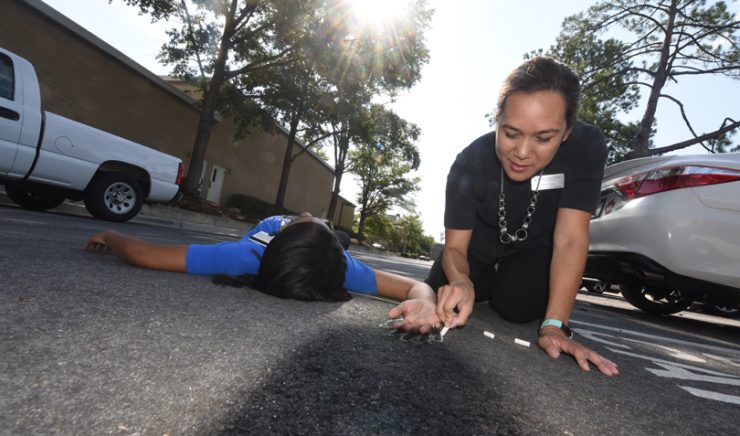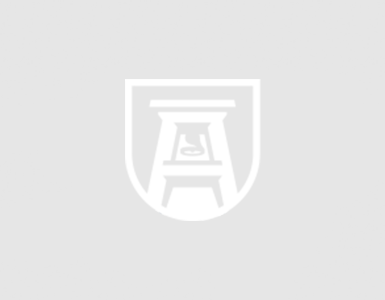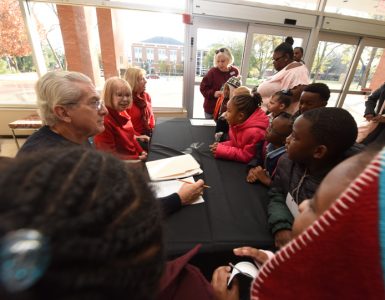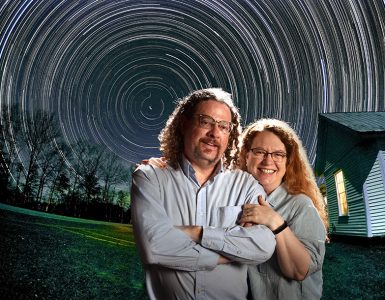All magazine covers are a challenge, but creating this one meant turning my office into a crime scene.
Our adventure began with a trip to the campus police station. Jasper Cooke, deputy chief, supplied me with a large box full of crime scene tape, lights, jars, cotton swabs, evidence bags and more. And I set out to create a scene that combined crime and genetic analysis.
Envisioning crime scene tape morphing into a perfect double helix spiral, I tried to try to shape the floppy yellow tape with steel wire frames. I used transparent tape to hold the pieces together. By the end of the day I had half of a DNA spiral. But even at 5 feet long, it was a little short and had many puckers where the wire fought the pull of the tape. Senior Photographer Phil Jones and I tried to make the wonky strip work, but we weren’t happy with test shots.
So I tried another idea. I went shopping for very wide wired floral ribbon. I picked the thickest ribbon I could find, then I spray mounted it to the back of another length of crime scene tape. By the end of the next day or so, I had something…worse. Although the combination of floral ribbon and crime scene tape was not puckered, the thin built-in wire could not support the weight of both the fabric ribbon and the plastic tape. The combination just flopped onto the floor into a useless pile.
Reverting to my original plan, I tried again to work with steel wire, going bigger and bolder. This time, I recruited our intern Alison “Sunny” Gaines. We took over several desks and the hallway. After a few hours of tugging at wires to straighten it — and making my coworkers limbo under a wire to pass through the walkway — we realized we were doing this all wrong. Overnight, our office craftsman Sergio Gallardo, a former electrician and now graphic designer, created a wire straightening tool from a couple of wood blocks and a hinge.
The next day, Sunny and I could now quickly pull the wire into smooth 12-feet lengths and frame our double helix. We wrapped the completed strands around a mailing tube, to shape them into corkscrews. Then we assembled both into the DNA shaped sculpture we photographed in our studio.
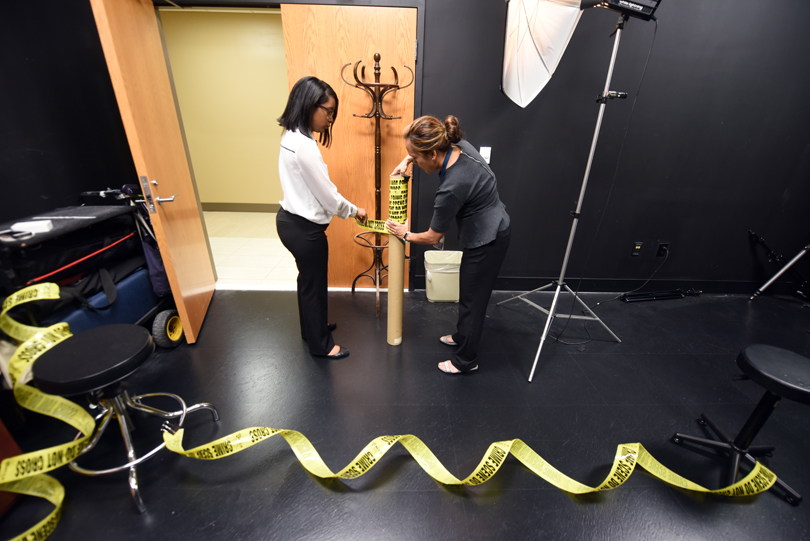
We set up the rest of the crime outside. In two photo sessions, I traced our “dead” body (played by Sunny the intern) with chalk and then set up our evidence collection box. After several rain delays, we finally got our window of sunlight to do outdoor photos. Not wishing to create commotion outside the hospital attached to the parking lot, we decided to clean up our crime after the shoots. So with a jug of water and some paper towels, we closed the books on this crime scene.
Want more? See the feature Analyzing DNA.

